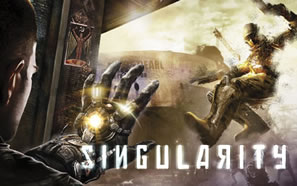Final Thoughts
It's unfortunate that Singularity adds another episode to the series of games that are released only to need a patch or two from day zero. In all fairness, if it were not for the glaring texture streaming problem, Singularity would likely be one of the most polished games we have looked at this year. In terms of stability we found the game to be rock solid when testing almost two dozen graphics card configurations as well as a range of platforms. Moreover, Crossfire and SLI worked right off the bat and they worked extremely well.
For a game that is very playable on a Radeon HD 5670 or GeForce 9600 GT at 1680x1050 we have to say Singularity looks quite good. However at this resolution the absence of anti-aliasing support translates into unnecessary jagged edges which detract from the game's visual appearance. Even at 2560x1600 we felt that the lack of anti-aliasing support was evident.
If you need an answer on why AA is not a default option, look at our tests where we forced Nvidia hardware to run with 4xAA. In short, we often saw performance hits as high as 50%. The lack of anti-aliasing support and the omission of many graphical settings unfortunately scream console port. The few visual quality settings include the ability to enable or disable High Quality Decals, Bloom, Depth of Field and Distortion, all of which were enabled for testing.
Amazingly Raven has for reasons unknown hidden the configuration settings despite the fact that PC gamers often tweak various options to improve performance and visual quality.
As it stands right now, Singularity is a game that can be enjoyed on relatively affordable hardware. The game doesn't appear to be too CPU dependant, so there is little need to overclock the hell out of your system for this one. Furthermore, while Singularity often utilized 4 cores when available we found that the game ran just as well on today's highly powered dual-core processors.
